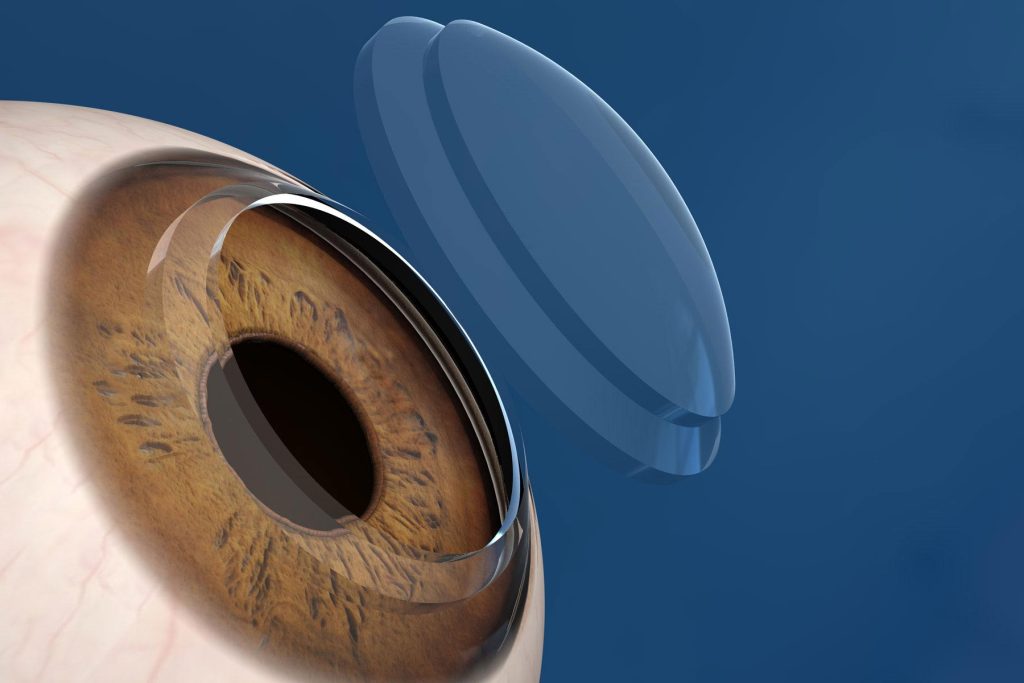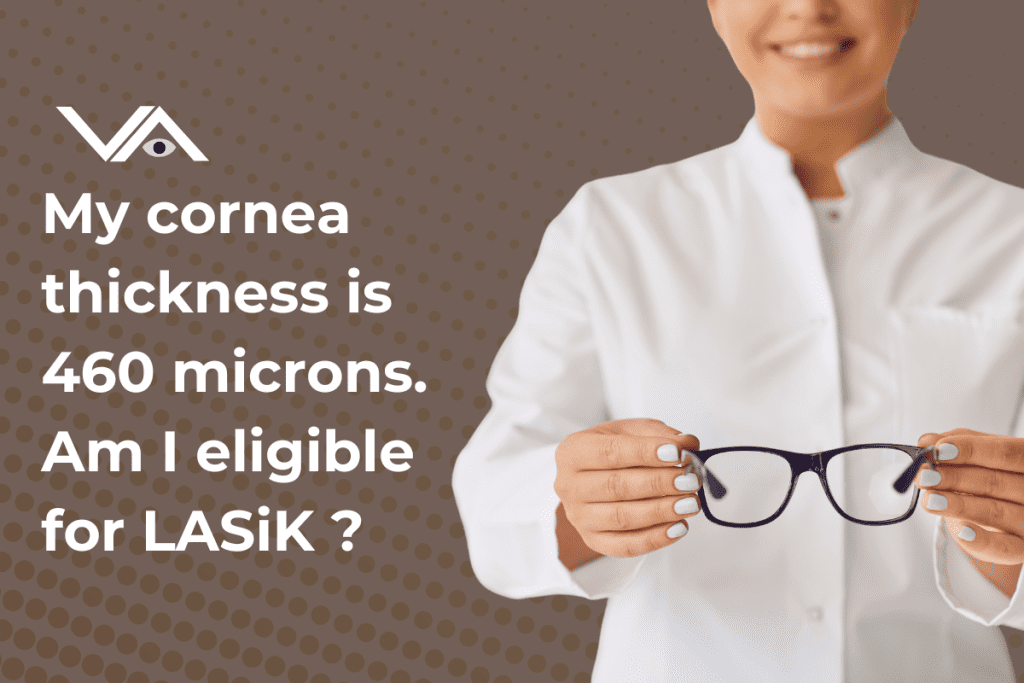Table of Contents
ToggleThe surgical treatment known as LASIK (Laser-Assisted in Situ Keratomileusis) is frequently used to treat common visual issues like nearsightedness, farsightedness, and astigmatism.
The cornea, the clear front surface of the eye, is reshaped during LASIK surgery using a very accurate excimer laser. The cornea is crucial in focussing light onto the retina, which affects how clearly we can see. The flap is reapplied after the cornea is reshaped, functioning as a natural bandage.
Recovery is often quick, and the majority of patients report better vision within a day or two due to the cornea’s quick healing and lack of the need for sutures. There is a chance that LASIK might minimize the need for glasses or contact lenses, although eligibility relies on things like corneal thickness.

My Cornea Thickness is 460 Microns. Am I eligible for Lasik ?
There might be variances between people, but the average corneal thickness is between 460 and 550 microns. Due to the danger of weakening the cornea and resulting issues, too-thin corneas may not be acceptable for LASIK.
Too thin a cornea refers to less than 300 Microns. On the other hand, very thick corneas may have sufficient tissue for the surgery, but other variables need to be considered.
Your corneal thickness of 460 Microns is not different from the normal range. It will be good for you because your thickness is not so much behind the actual range. Which may make you wonder whether LASIK is the right procedure for you, so please, for your satisfaction, visit a specialised doctor to check eligibility.
However, corneal thickness isn’t the only factor that determines LASIK candidature. To make a well-informed choice, a thorough assessment by a qualified eye surgeon is required. Other criteria also come into action.
Although a corneal thickness of 460 Microns is between the limits, it is easily applicable for the candidates. Hence This is not the only characteristic that determines LASIK eligibility. To establish if LASIK is a good choice for you, a thorough assessment by a qualified and experienced eye surgeon is necessary.
To make a well-informed decision, your surgeon will consider several variables, such as corneal thickness, corneal mapping, general eye health, and customized treatment choices. Remember that your safety and desired visual results come first, and your surgeon will consult with you extensively to determine the best course of action for your vision requirements.

Corneal Eligibility for Lasik Surgery
Corneal eligibility is an essential factor when deciding if somebody is a good candidate for LASIK surgery. By reshaping the cornea with the laser instrument, LASIK (Laser-Assisted in Situ Keratomileusis) seeks to address refractive vision problems such as nearsightedness (myopia), farsightedness (hyperopia), and astigmatism.
The cornea protects the inner layer of the iris and pupil, the transparent front portion of the eye. The main corneal elements that determine LASIK suitability are as follows:
Pachymetry of the Cornea:
Sufficient corneal thickness is essential for LASIK. During the surgery, a small flap is made on the cornea’s surface, and the underlying tissue is reshaped. LASIK is generally recommended for corneas with a thickness of between 460 and 550 microns. Thinner corneas might not have enough tissue for the surgery to be done safely.
Corneal Thickness and Residual Thickness Following Surgery:
LASIK involves making a tiny flap in the cornea and using a laser instrument to reshape the tissue. A crucial factor to consider is the cornea’s thickness following the operation. If your cornea is already somewhat thin, the surgeon must ensure there will be enough leftover corneal tissue after surgery to preserve the stability and integrity of your cornea.
Pachymetry and Mapping:
The thickness of the cornea is measured via pachymetry. Surgeons use specialized tools to map the thickness of the cornea across its surface. The distribution of corneal tissue may be better-understood thanks to this mapping, which is crucial for determining LASIK suitability.
Topography of the Cornea:
Topography of the Cornea is a mapping of the form and curvature of the cornea. Candidature for LASIK may be impacted by irregularities in the cornea’s form, such as keratoconus (progressive corneal thinning and steepening). Post-operative problems may be more likely in the presence of irregularities.
Keratoconus:
People with this condition, which causes progressive corneal thinning, often need to be better candidates for standard LASIK. However, alternative treatments like PRK or corneal cross-linking could benefit them. So individuals are advised to get under a fully skilled eye doctor to check their suitability and needs.
Corneal Health:
The condition of the cornea as a whole is crucial. Infections, dystrophies, and corneal scarring can all affect a person’s eligibility for LASIK. A healthy cornea is eligible for Lasik and recovers fully after the procedure.
Corneal Stability:
If your prescription (refractive error) has remained steady for at least a year, your cornea should be stable. Rapid changes in prescription might compromise the LASIK procedure’s precision.
Customised Treatment:
The creation of individualised treatment programs results from advancements in LASIK technology. Wavefront-guided LASIK and topography-guided LASIK are LASIK procedures that consider each patient’s particular corneal features, potentially improving results even when the corneas are thinner.
Alternate Procedures:
There are alternate vision correction techniques available if LASIK is ruled inappropriate owing to corneal thickness or other considerations. In PRK, the cornea’s surface is reshaped without the use of a flap. Your surgeon will advise you on the best action based on your unique needs.
It’s crucial to remember that LASIK technology has progressed over time. For those with thinner corneas or other corneal defects, there are modifications of the treatment that may be considered. PRK (Photorefractive Keratectomy) may be possible for people with thinner corneas since treatment involves altering the cornea’s surface without producing a flap.
Conclusion
Ultimately, a skilled eye surgeon must complete an assessment before determining a patient’s eligibility for LASIK. They will evaluate your corneal thickness, health, stability, and any other pertinent aspects to decide if LASIK is the best option for you.
If LASIK is not advised, your surgeon will go through other vision correction procedures to help you see clearly while putting your eye health and safety first.









